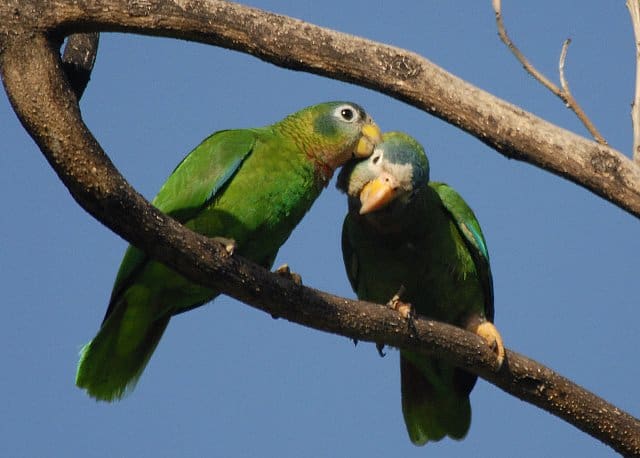The Yellow-billed Amazon (Amazona collaria) is threatened by forest clearance for mining, agriculture and trapping for the wild bird trade.
In collaboration with the American Bird Conservancy and the Kyle Brown Legacy, the WPT provided funding to study the distribution and population size of Jamaica’s Amazon parrots in Cockpit County, including the Yellow-billed Amazon.
Since 1995, there have been studies to determine the species’ range, estimate population size, identify factors limiting reproduction and train local people in research methods and monitoring. Some of its habitat has been designated a park but protection of those areas was lacking. There is also an ongoing effort to prevent bauxite mining in Cockpit Country. Researchers suggested further surveys and studies to determine the species’ range. The BirdLife Jamaica Parrot Project advocated for introducing educational programs and captive breeding.
Status: IUCN Vulnerable / CITES Appendix II
Population: 10,000–20,000
Range: Jamaica, W Indies.
Natural history: Yellow-billed Amazons are found up to 1200 m (3936 ft) in wet limestone forests with Terminalia and Cedrela foliage, more arid upland forests and cultivated areas with trees at forest edge. They forage for Cecropia catkins, nuts, fruits, figs and seeds. Birds are seen in large communal roosts outside the breeding season, and range widely during the day, returning to roost by dusk. These parrots may associate with Black-billed Amazons (Amazona agilis) and Olive-throated Conures (Aratinga nana). Groups employ sentinels on high, exposed perches to warn the flock of danger.

